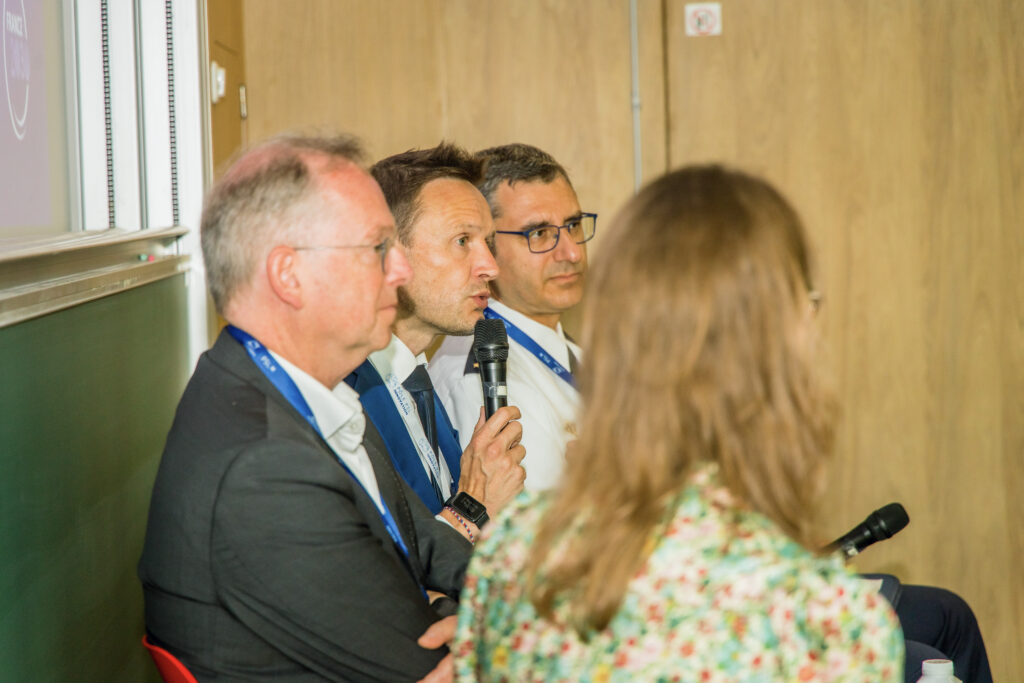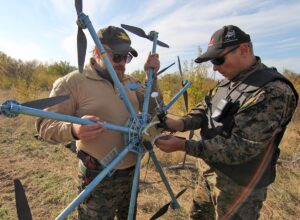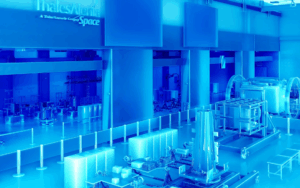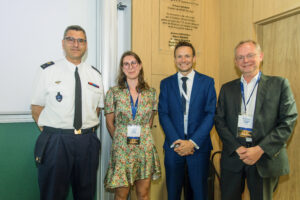Changing conflicts, innovation, and cooperation: defense is reinventing itself at Mines Paris Research Day


Defense is no longer the exclusive domain of traditional battlefields. Today’s conflicts—and those of tomorrow—are hybrid, cyber, and informational. They involve not only armies, but entire societies, through economic, digital, and cognitive means.
It is not enough to produce drones: they must also be produced quickly, in large quantities, and independently. The priorities are therefore not only technological: they are industrial, logistical, and strategic. “
Laurent Vieste, General Armament Engineer and Head of Defense Strategy and Technology at theDefense Innovation Agency (AID)
On the industrial side, Pierre Schanne, at Thales, observes that the return of high-intensity warfare is reshuffling the deck. The almost daily emergence of new theaters of conflict, or the occupation of new spaces such as very high altitudes or the deep sea, which are poorly regulated and conducive to strategic innovation, is prompting a reconsideration of the importance of remaining at the forefront in areas of sovereignty. Quantum sensors, cybersecurity, electronic warfare, defensive AI… Innovation, coupled with international alliances, particularly at the European level, could help close the gap in a number of technologies and industrial production.

Prototype of the Ukrainian R18 drone.
One of the major turning points in recent years has been the rise of universities as key players in defense innovation. Far from being compartmentalized between academic research and operational needs, links are strengthening to create synergies that generate new solutions.
Today, it is no longer just robotics engineers or materials specialists who are in demand: all disciplines are involved, from the humanities to artificial intelligence. The very concept of “conflict” has become an interdisciplinary issue.
Cédric Denis-Rémis, Vice President of Innovation and Entrepreneurship Development at PSL University
It is with this in mind that Mines Paris – PSL is a key partner in an innovation ecosystem that brings together start-ups, large corporations, the armed forces, and investors. The academic world is becoming a “trusted player,” capable of adopting a critical stance, questioning the uses of technologies, but also accelerating their transfer thanks to its valorization structures and investment funds, such as those set up by PSL.
How can the urgency of operational needs be reconciled with the long timeframes of research and industrial development? This tension structures all the actions carried out by the Defense Innovation Agency (AID) and is at the heart of the missions of the Ministry of the Armed Forces, which is responsible for coordinating these contrasting timeframes. This is a twofold requirement: anticipating technological breakthroughs while providing concrete responses to the immediate needs of the armed forces. In this context, the ability to adapt is a necessity, both technical and organizational.
Taking an industrial approach, Thales is deploying advanced digital simulation techniques to design complex architectures more quickly and test virtual production lines. These methods are crucial to meeting the “war economy” requirements expressed by the highest authorities in the country.

Thales Alenia Space’s Space Smart Factory project at the Tiburtino Technopole in Rome. The building will house Space JOINTLAB, a space for innovation and collaborative work with SMEs and research centers, a 21,000 m2 factory comprising 5,000 m2 of reconfigurable clean rooms, 1,900 m2 of office and coworking space, and service areas.
The need for autonomy is a key concern at both the French and European levels. The mechanisms recently put in place by the European Union—notably the European Defense Fund (EDF) and the projects led by the European Defense Agency (EDA)—are promising. However, they still need to become more strategically coherent and easier to understand for manufacturers and researchers.
We are dealing with issues, such as interoperability between European systems, that cannot be addressed alone. We are discovering new partners and forging long-term links. Collaborations with Ukrainian companies are even being considered. However, there are still significant shortcomings: there is no truly shared industrial strategy, procedures are too complex, and state funding remains uncertain.
Pierre Schanne, Director of Upstream Defense Studies at Thales

From left to right: Laurent Vieste, General Engineer of Armament and Head of the Defense Strategy and Technology Division at theDefense Innovation Agency (AID), Pauline Guével, Head of the Expertise and Prospective Division atPSL University, Cédric Denis-Rémis, Vice President of Development, Innovation and Entrepreneurship atPSL University, and Pierre Schanne, Director of Upstream Defense Studies at Thales.
The institutional, industrial, and academic worlds, although each with their own specific challenges, agree on one essential point: defense innovation must be thought of as a collective ecosystem. This approach involves “dual” strategies, both civil and military, as well as growing involvement of private partners in research funding. This change is accompanied by a cultural shift: large groups are now collaborating more easily with start-ups, while universities are becoming more agile.
Today, innovations from civilian research in AI, materials, cybersecurity, and sensors are fueling strategic applications. And this change in direction is forcing us to rethink our models and collaborations.
El Mouhoub Mouhoud, President of PSL University
The University Innovation Hub (PUI), recently certified and presented during Mines Paris Research Day, embodies this desire to break down barriers between research, innovation, and entrepreneurship. Jointly supported by PSL and the School, this initiative aims to structure the entire academic value chain—from idea to impact—by strengthening links between laboratories, start-ups, industry, and public institutions. Closely linked to the challenges of technological sovereignty, the PUI aims to facilitate access to scientific expertise, accelerate the transfer of strategic technologies, and support the emergence of innovative players, including in the field of defense. It is a key tool for developing an agile ecosystem capable of meeting the requirements of speed, security, and autonomy expressed by players in the sector.
The link between academic research and innovation in the defense and security sectors is more strategic than ever for the country, for Europe, and for the School as well.
Godefroy Beauvallet, Director General of Mines Paris – PSL
Production flexibility, organizational agility, cross-disciplinary collaboration, and international openness are now essential. The challenge is not simply technological: it is societal. By focusing on trust, cooperation, and the ability to innovate together, the French and European defense ecosystem can meet the challenges of a rapidly changing world.

To meet the challenges of autonomous driving, the HAIBrid project offers an innovative solution combining artificial intelligence and road behavior mo...